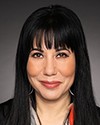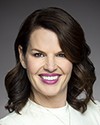Thank you to the committee for inviting me to speak on behalf of Volleyball Canada.
I have listened to the statements and stories of those who have shared their experiences with this committee so far, and wow, they have been very powerful. I'm hoping that I have the opportunity to speak about some ways that we are working toward positive change in this space.
First, I’d like to share some background from our sport.
Volleyball has a high female participation rate, especially at the youth levels. In 2022, our youth national championships had more than double the female players compared with male players. Female participation was also higher at our beach volleyball national championships, perhaps inspired by the success of our women’s teams at the world championship level.
Canada’s women’s teams and programs have progressed greatly on the international stage in recent years. It's something Canadians can be proud of, but it's not all good news. Unfortunately, most of these young athletes have been coached only by males, and often, youth volleyball is where their journey ends.
We have to ask ourselves some difficult questions. What are the barriers for female athletes and coaches? How can Volleyball Canada and its partners break those barriers for women coaches and referees? How can we make our sport more appealing and welcoming to women of all ages in all roles? Really, first and foremost, how do we make the sport environment as safe as possible for all, especially for those who have felt vulnerable or have been abused in the past?
Volleyball Canada has not been immune to the challenges facing sport. The work to make our sport safer is ongoing but by no means complete. Here are a few of the initiatives that are contributing to a safer sport.
Volleyball Canada requires all of its participants, as many sports do, to take safe sport training, and through coach education, we have incorporated the safe sport program and respect in sport program throughout the system.
Volleyball Canada was one of the first NSOs to sign on to the abuse-free sport program. It’s crucial—and we hear this over and over—that participants have a third party mechanism and are guaranteed that their complaints are being heard without judgment and without prejudice.
It’s a system that is evolving, and I am encouraged by the buy-in and participation from our partners at the provincial level and their affiliated clubs. We cannot make meaningful change without working together.
Our provincial and territorial associations also recognize the importance of working together at the policy level. We have implemented pan-Canadian policies to promote consistency in how we deal with issues across the country.
With the assistance of our funding partners, Volleyball Canada has teamed up with athletics and swimming to create a safe sport tool for youth. Our goal is to develop and implement a digital platform that promotes safe sport education and engagement for athletes between the ages of 11 and 18. This platform will be used to increase awareness among young athletes on different aspects of safe sport, such as maltreatment prevention, mental health support and nutrition. We have engaged with our provincial and territorial partners as well as clubs to get their input on the project to ensure it's a successful collaboration.
We have also been fortunate enough to work with associations such as Canadian Women and Sport on the gender equity playbook. It helped us to look inward before we embarked on any changes to the external strategies and programs.
Volleyball Canada is in the midst of independently led culture audits—some call them environmental reviews—of a few of our programs. These audits look at how we can be more inclusive and how we can serve our athletes better as players and people. I believe that culture audits are just as important as financial audits, which are typical in sport, and they need to be done on a regular basis.
With the assistance of our partners at the Canadian Olympic Committee, we have embarked on a diversity, equity and inclusion review led by Deloitte. It's already proving to be an eye-opening experience for all involved.
We have women in leadership roles, including our women’s indoor head coach and our sitting women's Paralympic head coach. More than 40% of our board is female. We are adding more female staff at the development and next-generation stages, but it's not enough.
We need to make the pathway to success clear and deliberate. We need to work together and demonstrate that our sport is a place where girls and women can thrive and succeed throughout their lives and careers. I am the father of two daughters who have been involved in several organized sports, so there is a personal as well as professional side to this quest to keep athletes safe and to make our sport more inclusive and welcoming.
With purposeful system-wide improvements from the grassroots club level to our national teams, we will witness the change needed to keep our sport relevant, inclusive and enjoyable for all.
I thank you for your time.





